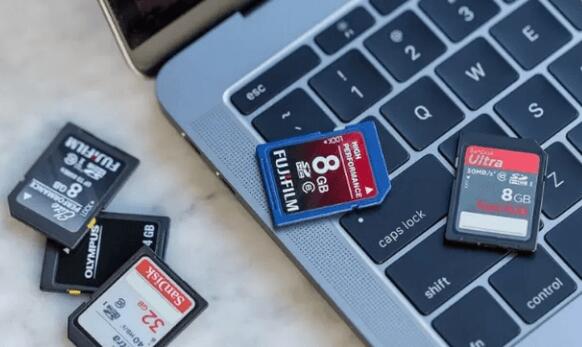SD cards are widely used in Chromebooks to expand storage, transfer files, and back up important data. However, these small storage devices are prone to corruption due to improper ejection, sudden power loss, or file system errors. If your Chromebook suddenly can’t read your SD card or files seem to have vanished, don’t worry. There are several effective ways to fix a corrupted SD card on a Chromebook without immediately resorting to formatting and data loss.
Corruption means the data on your SD card has become unreadable or inaccessible. On a Chromebook, symptoms may include:

“Unable to access storage device” message
Files appearing missing or renamed
SD card not showing up in the Files app
Requests to format the card
Common causes include:
Removing the SD card without safely ejecting it
Using the card on multiple devices
Virus-infected files (from other systems)
Power interruptions while transferring data
File system compatibility issues
Step-by-Step Guide to Fix SD Card Corruption on Chromebook
Step 1: Reboot Your Chromebook
A simple reboot can clear minor system glitches:
Click the time in the bottom-right corner.
Click the power icon to shut down.
Wait a few seconds and power it back on.
Reinsert the SD card and check Files.
Step 2: Check Card Reader or Slot
Make sure the issue isn’t hardware-related:
Use a different SD card in the Chromebook.
Try your corrupted card in another Chromebook, Android device, or Windows PC.
If another card works fine, your original SD card is likely at fault.
Step 3: Check the Files App
Sometimes, the SD card appears but isn’t automatically opened:
Open the Files app.
Look under “External Storage” for your card.
If visible but empty or unresponsive, move on to recovery.
Step 4: Safely Eject and Reinsert
Improper ejection can damage file systems. Reinsert the card safely:
In the Files app, click the eject icon beside the SD card.
Wait for it to disappear.
Physically remove and reinsert the card.
Step 5: Use Chrome OS Diagnostics
Chromebooks have a Diagnostics tool:
Open Chrome and enter chrome://diagnostics.
Look for storage-related logs.
If errors are detected with the external storage, note them for further troubleshooting.
Step 6: Use Linux Mode to Check the SD Card
If Linux (Crostini) is enabled:
Open Terminal.
Type lsblk to list devices.
Identify your SD card (often /dev/sdb1).
Type sudo fsck /dev/sdb1 and press Enter.
Follow prompts to fix file system errors.
Note: Replace /dev/sdb1 with the correct identifier for your card.
Step 7: Recover Data Using Panda Assistant or Similar Tools
If your Chromebook can read the SD card but not access files:
Connect the SD card to a PC or Linux machine.
Download Panda Assistant or tools like Recuva or PhotoRec.
Scan the card for recoverable files.
Save recovered data to a secure location.
Step 8: Format the SD Card (Only If Necessary)
As a last resort:
Insert the SD card.
Open the Files app.
Right-click the SD card name.
Choose Format Device.
This erases all content but restores the card to usable condition. Ensure all recoverable data has been saved before this step.
Step 9: Format the Card on Another Device
If Chromebook won’t format the card:
Insert it into a Windows PC or Android phone.
Choose FAT32 or exFAT format.
Reinsert it into the Chromebook.
Step 10: Use Chromebook Recovery Utility
In rare cases where Chromebook system files are affected:
Go to the Chrome Web Store.
Install Chromebook Recovery Utility.
Follow instructions to create a recovery USB.
Recover Chrome OS to resolve system-side SD card issues.
Preventing SD Card Corruption on Chromebook
Always Eject Before Removal: Use the eject button in the Files app.
Avoid Cross-Device Use: Only switch devices after formatting the card.
Back Up Regularly: Store copies of key files in Google Drive or external drives.
Use Trusted Brands: Stick with SanDisk, Samsung, Lexar, etc.
Avoid Full Capacity Usage: Leave at least 10% free to avoid read/write errors.
Don’t Interrupt Transfers: Allow file copies to complete before removing the card.
Run Diagnostic Checks Periodically: Especially if using Linux mode.
Corrupted SD cards can cause data loss and major inconvenience, but Chromebooks offer several ways to troubleshoot the problem. From rebooting your device and checking hardware to using Linux tools like fsck and recovery software such as Panda Assistant, you can often restore functionality without losing data. If all else fails, formatting remains a last resort. Always back up important files and use SD cards safely to prevent corruption. With the right approach, your SD card and your data can often be rescued without professional intervention.
About us and this blog
Panda Assistant is built on the latest data recovery algorithms, ensuring that no file is too damaged, too lost, or too corrupted to be recovered.
Request a free quote
We believe that data recovery shouldn’t be a daunting task. That’s why we’ve designed Panda Assistant to be as easy to use as it is powerful. With a few clicks, you can initiate a scan, preview recoverable files, and restore your data all within a matter of minutes.

 Try lt Free
Try lt Free Recovery success rate of up to
Recovery success rate of up to









